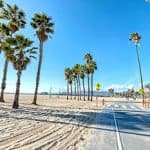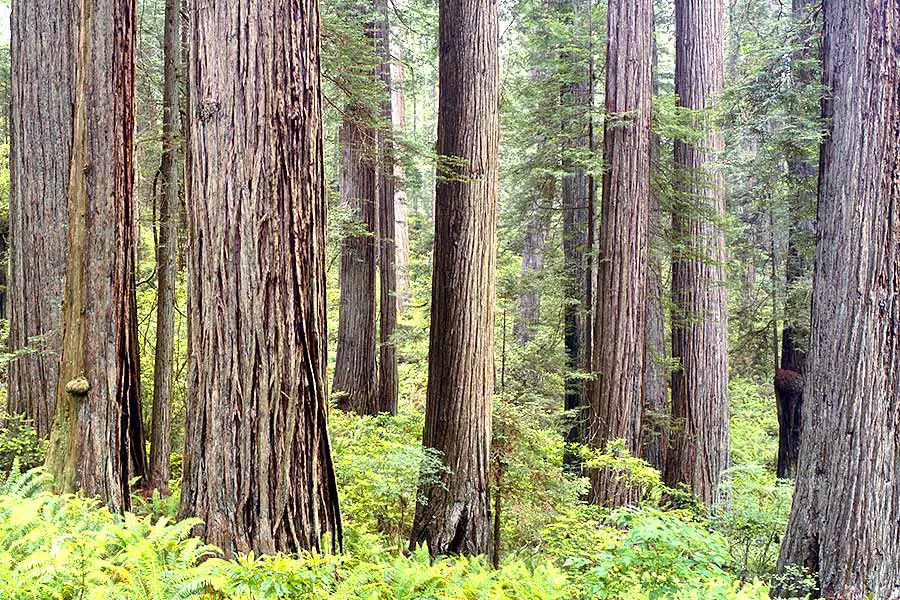
California is full of amazing wonders from sprawling metropolitan areas, stunning coastlines, and expansive national parks. One of the most spectacular natural attractions is groves of massive redwood and sequoia trees. These names are often used interchangeably. The question is, are redwoods and sequoias the same?
While redwoods and sequoias are closely related and belong to the same family, they are distinct species and are found in different parts of the State of California. Likewise, both are beautiful, equally impressive, and each holds a world record for its size.
Visiting these ancient trees is an excellent addition to any California itinerary. Please continue reading for more information about where to find the redwoods and sequoias, what makes them unique, and the best way to make them a part of your California trip.
Redwoods and Sequoias: Is There a Difference?
Redwoods and sequoias are closely related, and both belong to the same genus of coniferous trees. But they grow in different locations in the state. For example, California redwoods (officially named Sequoia sepmervirens) can be found along coastal regions of California from the middle of the state all the way to the Oregon border.
Giant sequoias (officially named Sequoiadendron giganteum) can be found growing in the Sierra Nevada Mountains. The one thing that these trees have in common is their ability to reach record-breaking sizes.

California redwoods hold the record for being the tallest trees in the world. The average California redwoods stand between 200 and 240 feet tall. The tallest known redwood is located in Redwood National Park. This tree, which is named Hyperion, stands 380 feet tall. This height is taller than the Statue of Liberty, which stands 305 feet tall, including the base.
Sequoias, on the other hand, are the largest tree by volume. Their massive trunks are an incredible sight to see. With an average height of 150 to 280 feet, sequoias don’t grow as tall as redwoods.
However, their trunks can measure 20 to 30 feet across. To put this in perspective, it would take 15-18 people holding hands to reach all the way around the base of the average Sequoia!
Bay Area Answers Fun Fact: While General Sherman is currently the largest tree on earth, there has been evidence found that much larger trees 2-3 times its size used to exist.
Another similarity is how long they live. California redwoods can live up to 2,000 years, and Giant sequoias can reach an impressive 3,000 years. It’s incredible to think that some of these giants were around before the beginning of the Roman Empire.
Both of these trees take a long time to reach their maximum size. Redwoods can grow 6-8 feet in height in a single season, while sequoias grow more slowly at a rate of 2 feet in the same period. This growth rate is primarily due to the conditions where they grow.
California redwoods are found in coastal regions that get more rainfall. Sequoias grow far from the ocean at elevations of 3,000 to 8,000 feet above sea level. Areas where redwoods grow typically get 3-4 times the amount of rainfall than the areas where sequoias are found.
Where is the Closest Place to San Francisco to See Sequoias and Redwoods?
Redwoods can be found all over the Bay Area. There are even small groves that are grown right in the middle of the city. For example, the Transamerica Pyramid building has a small park at its base that features a grove of redwood trees.
However, redwoods take hundreds of years to reach their full height, so the man-made groves are sure to be underwhelming. So instead, it’s best to see these giants in their natural habitat. For this, most people think of Redwood National Park.
Unfortunately, this park is about 5.5 hours away from San Francisco by car. A great alternative is either Big Basin Redwoods State Park (just an hour and 15 minutes south of downtown) or Muir Woods National Monument (20 minutes north of the Golden Gate Bridge).
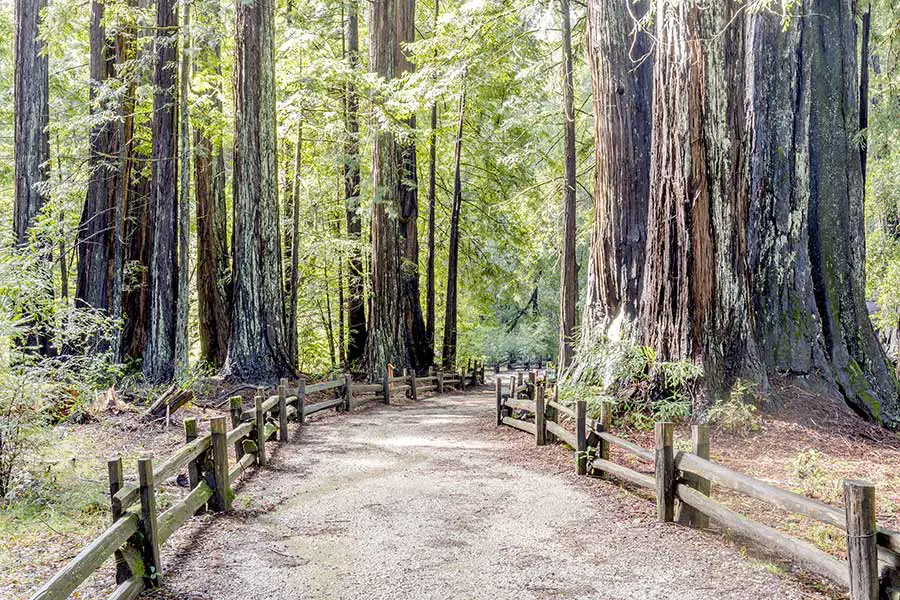
Sequoias, on the other hand, are not very close to San Francisco. The nearest grove of Sequoias is about 3.5 hours from the city in Yosemite National Park. The largest of these trees are located in Sequoia National Park, which is a little over 4 hours from San Francisco. If you are going to make the drive, the extra time to Sequoia National Park is worth it.
Other Posts of Interest
- What Is John Muir Known For?
- What Is Union Square In San Francisco?
- Where Is Travis Air Force Base Located?
- Do You Need A Car To Live In San Francisco?
Are Redwoods and Sequoias Endangered?
Both redwoods and sequoias are classified as endangered by the IUCN (International Union for Conservation of Nature) Red List. Because of their size, many of these trees have been logged for lumber since the 1800s.
Part of the challenge with preserving these old trees is that it takes hundreds of years for them to reach full maturity. So conservation efforts today won’t yield any of the fruits of their labor for centuries. Also, smaller trees struggle to get enough sunlight in the shadow of their much taller ancestors.
There is nothing to prevent redwoods from being logged if they grow on private lands. Fortunately, 82 percent of the ancient redwoods can be found in parks and nature preserves where they are protected. On the other hand, Giant sequoias are protected from logging whether they are on public or private land (only about 10 percent are on private land).
Are Redwoods and Sequoias Fire Resistant?
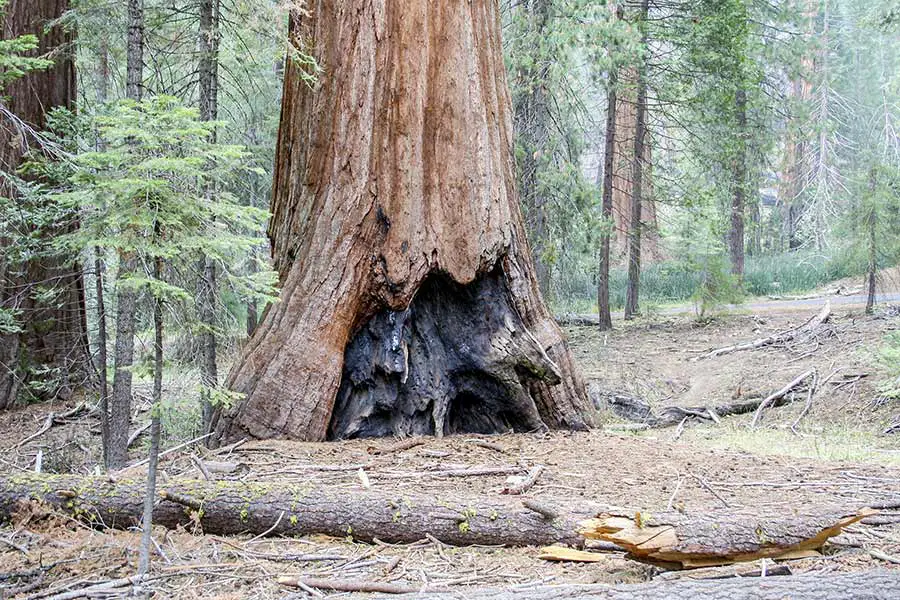
One surprising fact that most people don’t know is that redwoods and sequoias are somewhat fire-resistant. They produce a substance called tannin that helps protect them. The trees also don’t produce resin with is usually highly flammable.
However, this lack of resin doesn’t mean that the trees are entirely safe from fires. It is possible for a fire to climb the trunk of the tree and reach the susceptible crown. If this happens and the crown is destroyed, the tree will likely die.
Ironically fires are actually beneficial in a couple of ways; in the case of the Giant sequoias, the seeds are sometimes retained for years in the closed cones of the trees. So when fires spread through the area, it causes the cones to open and release a multitude of seeds promoting a new generation of sequoias.
Fires are also beneficial because they burn up fallen trees, limbs, and other debris to keep in check the build-up of these materials on the ground, leading to smaller fires in the future.
In fact, the park service often uses prescribed fires, which are fires planned and started by park staff to manage forest areas. The purpose of prescribed fires includes burning ground debris, eliminating invasive species, generating new hardwood production in the understory, and many other beneficial conditions.
Are Sequoias Only in California?
While geological records show that these trees once grew in many places across the North American continent, Giant sequoias are only found in Northern California in 77 distinct groves. In addition, most of these trees are found in protected areas, including Sequoia National Forest, Sequoia National Park, and Giant Sequoia National Monument.
Is General Sherman Still Standing?
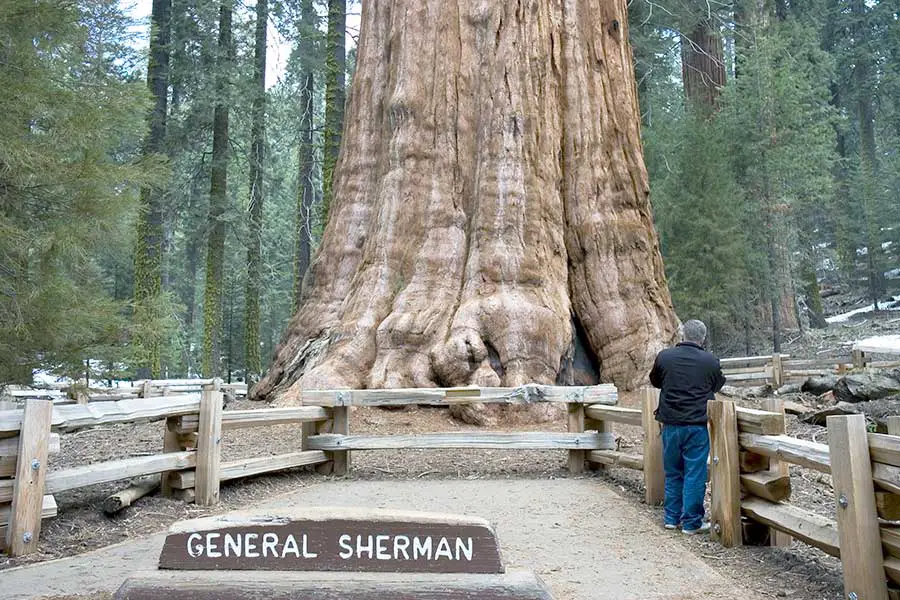
Yes, the General Sherman tree is still standing. Named after the infamous American Civil War general, General Sherman is the world’s largest single-trunk tree on earth. Standing at 275 feet with a base of 36 feet in diameter, General Sherman weighs over 4 million pounds.
Not only is this tree massive, but it’s also very old. Scientists estimate that the tree was initially sprouted between 400 and 700 BC.
In 2021, a major fire broke out in Sequoia National Park and threatened to destroy General Sherman. Thanks to the quick thinking of firefighters, they were able to wrap the base of the tree in protective fire-resistant blankets.
Where in California Can You Drive Through a Tree?

At one point in time, it was popular to cut holes in trees so that people could walk or drive-thru them for a photo op. Ironically, it was usually done to promote the local, national parks.
Unfortunately, these trees are more susceptible to damage from natural disasters and storms because of the compromised base.
This practice is now restricted to help protect the trees, but there are a few locations where you can still have this experience. All of the drive-thru trees that exist today are on private property and provide access for a small fee.
- Chandelier Drive-Thru Tree (Leggett, CA – 3 hours from San Francisco) – Costs $10 per vehicle.
- Shrine Drive-Thru Tree (Myers Flat, CA – 4 hours from San Francisco) – Costs $10 per vehicle. Tight fit so recommended for smaller, compact cars or motorcycles.
- Tour-Through Tree (Klamath, CA – 6 hours from San Francisco) – Costs $10 per vehicle.
Experience California’s Giants
A trip to California isn’t complete until you get out of the city and explore one of the many natural spaces. Having the opportunity to see either the redwoods or sequoias is an experience that you will never forget. It’s impossible to imagine their size until you are standing at the base of these massive living treasures.



